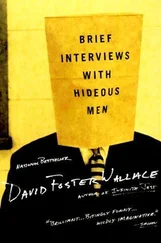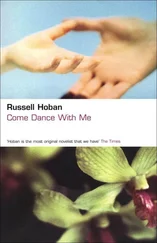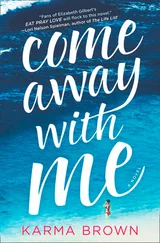Scott MacDonald - A Critical Cinema 2 - Interviews with Independent Filmmakers
Здесь есть возможность читать онлайн «Scott MacDonald - A Critical Cinema 2 - Interviews with Independent Filmmakers» весь текст электронной книги совершенно бесплатно (целиком полную версию без сокращений). В некоторых случаях можно слушать аудио, скачать через торрент в формате fb2 и присутствует краткое содержание. Год выпуска: 1992, ISBN: 1992, Издательство: University of California Press, Жанр: Прочая документальная литература, на английском языке. Описание произведения, (предисловие) а так же отзывы посетителей доступны на портале библиотеки ЛибКат.
- Название:A Critical Cinema 2: Interviews with Independent Filmmakers
- Автор:
- Издательство:University of California Press
- Жанр:
- Год:1992
- ISBN:9780585335100
- Рейтинг книги:3 / 5. Голосов: 1
-
Избранное:Добавить в избранное
- Отзывы:
-
Ваша оценка:
- 60
- 1
- 2
- 3
- 4
- 5
A Critical Cinema 2: Interviews with Independent Filmmakers: краткое содержание, описание и аннотация
Предлагаем к чтению аннотацию, описание, краткое содержание или предисловие (зависит от того, что написал сам автор книги «A Critical Cinema 2: Interviews with Independent Filmmakers»). Если вы не нашли необходимую информацию о книге — напишите в комментариях, мы постараемся отыскать её.
A Critical Cinema 2: Interviews with Independent Filmmakers — читать онлайн бесплатно полную книгу (весь текст) целиком
Ниже представлен текст книги, разбитый по страницам. Система сохранения места последней прочитанной страницы, позволяет с удобством читать онлайн бесплатно книгу «A Critical Cinema 2: Interviews with Independent Filmmakers», без необходимости каждый раз заново искать на чём Вы остановились. Поставьте закладку, и сможете в любой момент перейти на страницу, на которой закончили чтение.
Интервал:
Закладка:
Form Phases I
. Strange way to work, but I didn't know about using an animation stand yet. In some ways though, by seeing my images projected on a screen before they were shot, I could better visualize the end result. I still have a flipbook made up of those slides bolted together in sequence.
MacDonald:
Did film grab you right away?
Breer:
By the time of
Jamestown Baloos
I was enthusiastic. But at first I was scared of the camera. I had an aversion to photography, partly, I suppose, because of my father's enthusiasm for it. The only big fight I ever had with him was over his taking pictures of me, and of stopping things to take pictures of the family. He came to visit me in Europe, and we'd go to a restaurant, and he'd stand on the next table and take pictures. It was embarrassing. It seemed to me then that he photographed everything before he reacted and could only react
after
he'd developed his pictures. That was counter to my feeling of how life should be experienced. I didn't like the idea of the lens between me and what I was looking at. I wouldn't even wear sunglasses. It's a wonder I ever got into film.
MacDonald:
From what you say, I assume that the history of film was not particularly interesting to you. Film simply became a way of doing things with painting that you couldn't do on a still canvas. And the filmmakers whose work seems related to your early films tend to have come to film for the same reason. Fischinger, for example.
Breer:
In a way, I suppose that's true, but somebody I always mention as having a powerful influence on me was Jean Vigo, who didn't make animated abstract films. His spirit of free association in
A propos de Nice
[1930], for instance, and the kind of cutting he does there, moved me. And I liked
Zéro de Conduite
[1933], his anarchism, his humor, and his esprit. I could identify with him. I have an aversion to just purely abstract films. That's why I have trouble with Fischinger. I admire him in some ways and find him something of an abomination in others.
Page 20
I did bring to those early films all these post-Cubist notions of space. Making
Form Phases I,
I realized that whatever moves destroys everything else. You have to counter one movement with another. If you have one thing moving in an otherwise static field, the static field dies. You know the usual opening shot of a conventional film, the helicopter shot of a car going down a highway seen from aboveyou watch that car. It's a tiny dot on a huge screen, but you're glued to that one thing and everything else is peripheral. Once I was making films, I learned that I couldn't work with the stable kinds of relationships I'd worked with in my painting. I had to rethink things completely. And that's when I went for an all-over active screen and for real hectic films. Then I could play with the agitation itself in dosages, rather than try to think in terms of static compositions in which elements move.
MacDonald:
Most of your films are not about particular topics. Was there a specific incident involving Pope Pius XII that caused you to do
Un Miracle?
Breer:
It must have been inspired by something I saw, but I'll be damned if I know what. I had had this vision of doing a film based on
The Metamorphosis,
the Kafka story where the main character changes into an insect. I wasn't interested in illustrating Kafka, but in using the notion of metamorphosis. I had my camera set up in Montparnasse. It was Sunday, I remember, and I was going to shoot film. I walked to the kiosk in Montparnasse and bought a
Paris Match
. In this
Paris Match
there was an essay on Pope Pius XII, with a lot of photographs. My vision was that this film would go from live action into animation or vice versa, and back again. The idea was just as general as that. But after buying the
Paris Match,
I saw the possibility of doing a number on Pope Pius. My anti-Catholicism was pretty fervent in those days. Pius XII was accused of reneging on allowing Jews to escape from Germany and was generally very aloof and removedpious in the worst sense. So with all these pictures in my hand I went to the studio. I picked up Hulten on the way and talked to him about what I wanted to do. He suggested a way of organizing a little sequence, and I cut the photos out and put the thing together. He helped me conceive narratively, which I don't think I would have done normally. But the sacrilegious part was all mine. Pontus and I had gotten drunk together around that time and I went into the church in Montparnasse to slip goldfish into the holy water. Hulten was the lookout. I got the fish into the basin, but it was shallow, and they went out the other side, and onto the floor. I scooped them up, got them into the plastic bag, and we took off. I remember writing a letter to the pope asking how much it would cost to be excommunicated. That was the mood behind that film. The actual esthetic had to do with transformation. It ended up being the pope juggling his head. It wasn't what I had expected it to be.
Page 21
MacDonald:
While metamorphosis is usually central in your filmswe watch the constant shifting of one thing into anotherduring the early part of your film career it was already taking two different forms, each of which tended to be primary in one film or another. In some cases you worked with generalized shapes:
Form Phases I, II,
and
IV
are examples. In other cases
Image by Images, Inner and Outer Space,
and
A Man and His Dog Out for Air,
for examplethe metamorphosis of the drawn line is the focus.
Breer:
Well, the linear ones come from my wanting to be simple, wanting to make a film with a pencil, or in this case, with Flomaster pens. I really got to be an expert with those pens. I called myself a Flo Master. Anyhow, I liked the idea that all I needed to make a film was paper and ink, or pretty close to it.
A Man and His Dog Out for Air
was a popular success, relatively speaking. It wasn't the first time I got noticed, but it had a large audience in New York, including people who wouldn't normally have reacted to avant-garde painting or avant-garde anything else. I thought maybe this was a special way of expressing myself simply, directly, and primitively, that could get a broader audience. And it was agreeable to sit and draw on cards or paper all day long. Those films came more from sitting at a drawing table or a desk, looking out the window, and having a nice time. And later committing it to film.
When I was making the collage films, I was more involved with what I was going to see on the screen at the end, which had more to do with editing and with thinking in terms of that big rectangle up on the wall with people looking at it. I alternated methods. I'd get tired of doing film one way, and the next time I'd do it the other way.
I just had a flash about something you said about metamorphosis. Metamorphosis is just a natural thing. In animation you make each frame, and for something not to be dead on the screen, it has to change. One of my tricks used to be to see if I could trace an image as exactly as possible. I knew it would still vary a little bit and that that variation would give it a sort of breathing presence on the screen.
Breathing
[1963] is an example. In trying to copy, I found I couldn't, and I liked the idea that it was impossible. Whether I tried to hold the images absolutely still or let them fly off in every direction, metamorphosis was what was going to happen anyway.
Читать дальшеИнтервал:
Закладка:
Похожие книги на «A Critical Cinema 2: Interviews with Independent Filmmakers»
Представляем Вашему вниманию похожие книги на «A Critical Cinema 2: Interviews with Independent Filmmakers» списком для выбора. Мы отобрали схожую по названию и смыслу литературу в надежде предоставить читателям больше вариантов отыскать новые, интересные, ещё непрочитанные произведения.
Обсуждение, отзывы о книге «A Critical Cinema 2: Interviews with Independent Filmmakers» и просто собственные мнения читателей. Оставьте ваши комментарии, напишите, что Вы думаете о произведении, его смысле или главных героях. Укажите что конкретно понравилось, а что нет, и почему Вы так считаете.











